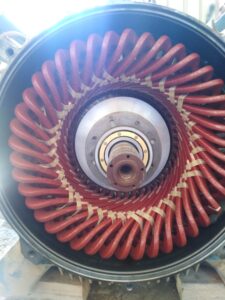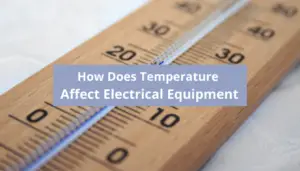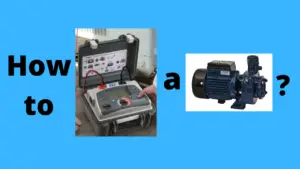Electric motors play a vital role in various industries, powering everything from appliances to machinery.
However, sometimes these motors can emit smoke, which is a cause for concern. Understanding the reasons behind electric motor smoking can help prevent serious damage and potential safety hazards.
Overheating, electrical faults (such as short circuits and overloads), and mechanical issues (like bearing problems or misalignment) can cause electric motors to smoke.
In this article, we will explore the common causes of electric motor smoking, its effects, preventive measures, and troubleshooting steps.
Table of Contents
Understanding Electric Motors
Electric motors are devices that convert electrical energy into mechanical energy. They consist of several components, including a stator (stationary part) and a rotor (rotating part).
The motor’s operation relies on the interaction of electromagnetic fields within these components. To ensure the motor’s optimal performance, it is crucial to identify and address any issues that may lead to smoking.
Causes of Electric Motor Smoking
A. Overheating
One of the primary causes of electric motor smoking is overheating. Several factors can contribute to this:
- Insufficient Cooling: Inadequate ventilation or blocked air vents can impede proper cooling of the motor, leading to increased heat buildup.
- High Ambient Temperature: Operating in an environment with high ambient temperatures can strain the motor and cause it to overheat.
- Excessive Current: When the motor draws more current than it is designed to handle, it generates excess heat, potentially resulting in smoking.
- Voltage Imbalance: An unbalanced voltage supply can cause uneven distribution of power, leading to overheating and smoking of the motor.
- Voltage drop: When the voltage drop across a motor exceeds a certain threshold, it can lead to various issues, including overcurrent and of course overheating.
B. Electrical Faults
Electrical faults can also contribute to motor smoking. Common electrical issues include:
- Short Circuits: A short circuit occurs when there is an unintended connection between two conductors, causing an abnormal flow of current. This can result in overheating and smoking.
- Overloads: Overloading the motor with excessive load or prolonged operation beyond its capacity can lead to overheating and subsequent smoking.
- Voltage Spikes: Abrupt voltage spikes or surges can cause a sudden increase in current, potentially damaging the motor and causing it to smoke.
- Insulation Failure: Insulation breakdown or deterioration can lead to electrical leakage, short circuits, and ultimately, smoking of the motor.
Read also my article: Electric Motor Woes: What Causes Winding Burnout And How To Fix It.
C. Mechanical Issues
Mechanical problems can also contribute to electric motor smoking. These include:
- Bearing Problems: Worn-out or improperly lubricated bearings can increase friction and heat generation, leading to motor smoking.
- Misalignment: Misalignment of the motor’s components can cause excessive vibration, increased friction, and overheating, ultimately resulting in smoking.
- Rotor Issues: Damaged or unbalanced rotors can cause abnormal operation, leading to increased heat and potential smoking of the motor.
Effects of Motor Smoking
Motor smoking can have several adverse effects. It not only indicates an underlying issue but can also result in severe damage to the motor and its surrounding components.
Moreover, smoking motors pose a fire hazard and can lead to disruptions in operations, costly repairs, or even replacement of equipment.
Read also my comprehensive article: How does temperature rise affect electrical equipment.
Preventive Measures
To avoid motor smoking, implementing preventive measures is crucial. Here are some effective strategies:
A. Proper Maintenance
- Regular Cleaning: Keep the motor and its surroundings free from dust, debris, and contaminants to ensure optimal airflow and cooling.
- Lubrication: Follow manufacturer guidelines to lubricate the motor’s bearings and moving parts regularly, reducing friction and heat generation.
- Inspection: Perform routine inspections to identify and address any potential issues promptly.
- Replacing Worn Parts: Replace worn-out components, such as bearings or damaged insulation, to prevent overheating and motor smoking.
B. Temperature Monitoring

Install temperature monitoring devices to continuously monitor the motor’s temperature. This enables early detection of overheating, allowing for timely intervention and prevention of smoking.
I use a thermal imaging at work to check motor temperature as a routine regular maintenance to prevent any overheating.
C. Electrical Protection Devices
Utilize electrical protection devices such as circuit breakers, fuses, and thermal overload relays. These devices help prevent excessive current flow, short circuits, and voltage spikes that can lead to motor smoking.
D. Correct Motor Sizing
Ensure that the motor is properly sized for the intended application. An undersized motor may be prone to overheating and smoking due to operating beyond its capacity.
Troubleshooting Steps
In the event of motor smoking, it is important to follow these troubleshooting steps:
A. Immediate Actions
- Disconnect the power supply to the motor to prevent further damage and potential hazards.
- Extinguish any flames or fire caused by the smoking motor using appropriate fire suppression methods.
B. Inspection and Diagnosis
- Inspect the motor for visible damage, loose connections, or any other signs of mechanical or electrical issues.
- Use diagnostic tools, such as a multimeter, to measure electrical parameters and identify potential faults.
C. Repair or Replacement
Based on the inspection and diagnosis, determine whether the motor can be repaired or needs replacement. Seek professional assistance if necessary.
Conclusion
Smoking electric motors are a clear indication of underlying issues that need immediate attention.
By understanding the causes, effects, and preventive measures discussed in this article, you can take proactive steps to ensure the longevity and safe operation of electric motors.
Regular maintenance, temperature monitoring, electrical protection, and correct motor sizing are all essential elements in preventing motor smoking and avoiding costly disruptions in various industries.
Don’t Leave Empty-Handed!
Install my Free Android App on Google Play:
Electrical Cables Most Common Tables “Cables Tables”
And, my Electrical Calculations App “Fast Electrical Calculator”
Discover more great content by subscribing to My channel
Looking to stay ahead of the game in the world of electrical engineering? Subscribe to my YouTube channel and gain access to exclusive content you won’t find anywhere else!
The staff I recommend
(Amazon Affiliate Links to products I believe are high quality):
- Economy 120 Volt/60Hz AC Power Source – Step-Down Voltage & Frequency Converters 1800W
- UNI-T Digital Multimeter Tester UT139C
- 50-Amp Extension Cord for RV “100ft”
- Voltage Stabilizer 110/220v
- Hair Dryer “best selling“
- TOSHIBA EM131A5C-BS Countertop Microwave Ovens
Disclaimer: This contains affiliate links to Amazon products. I may earn a commission for purchases made through these links.


